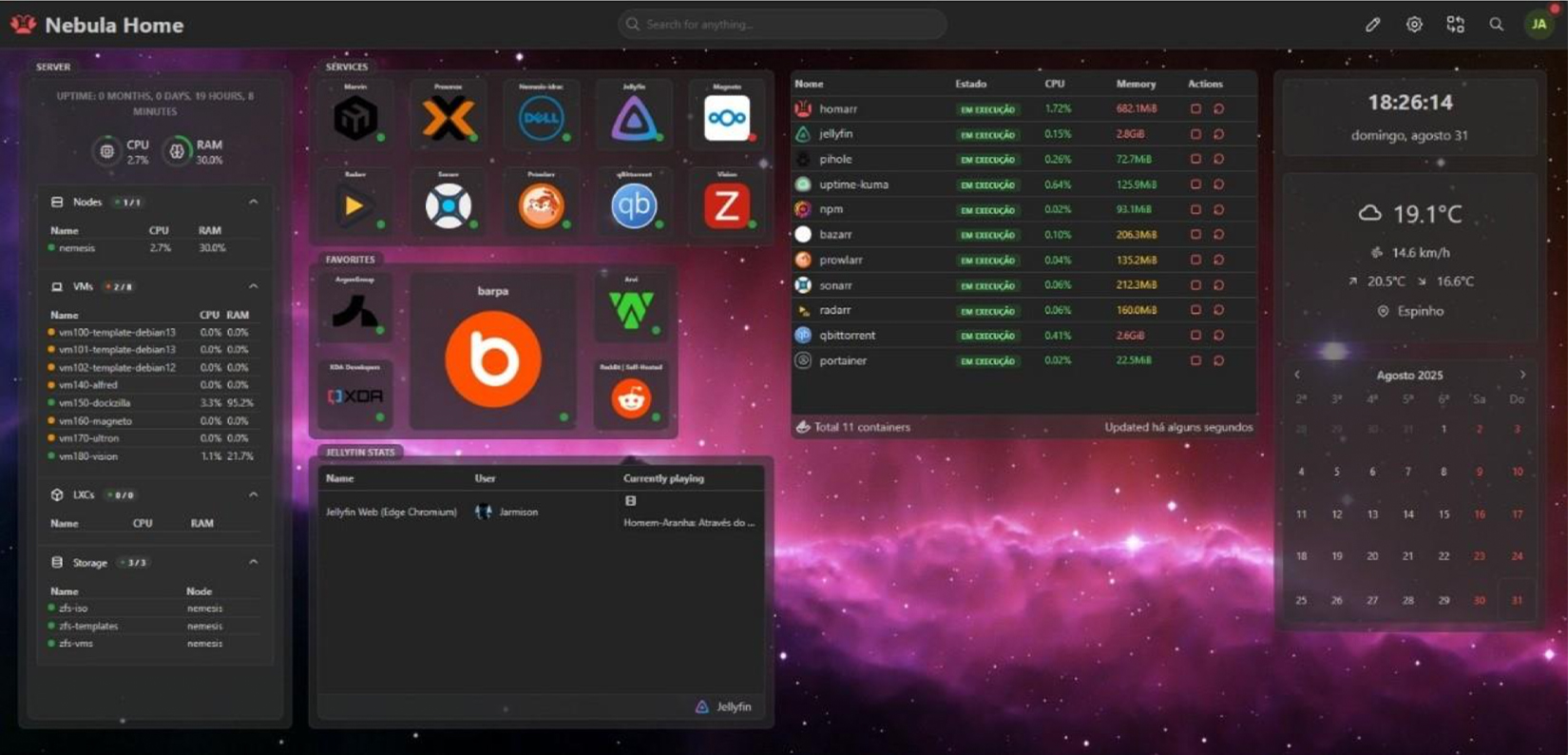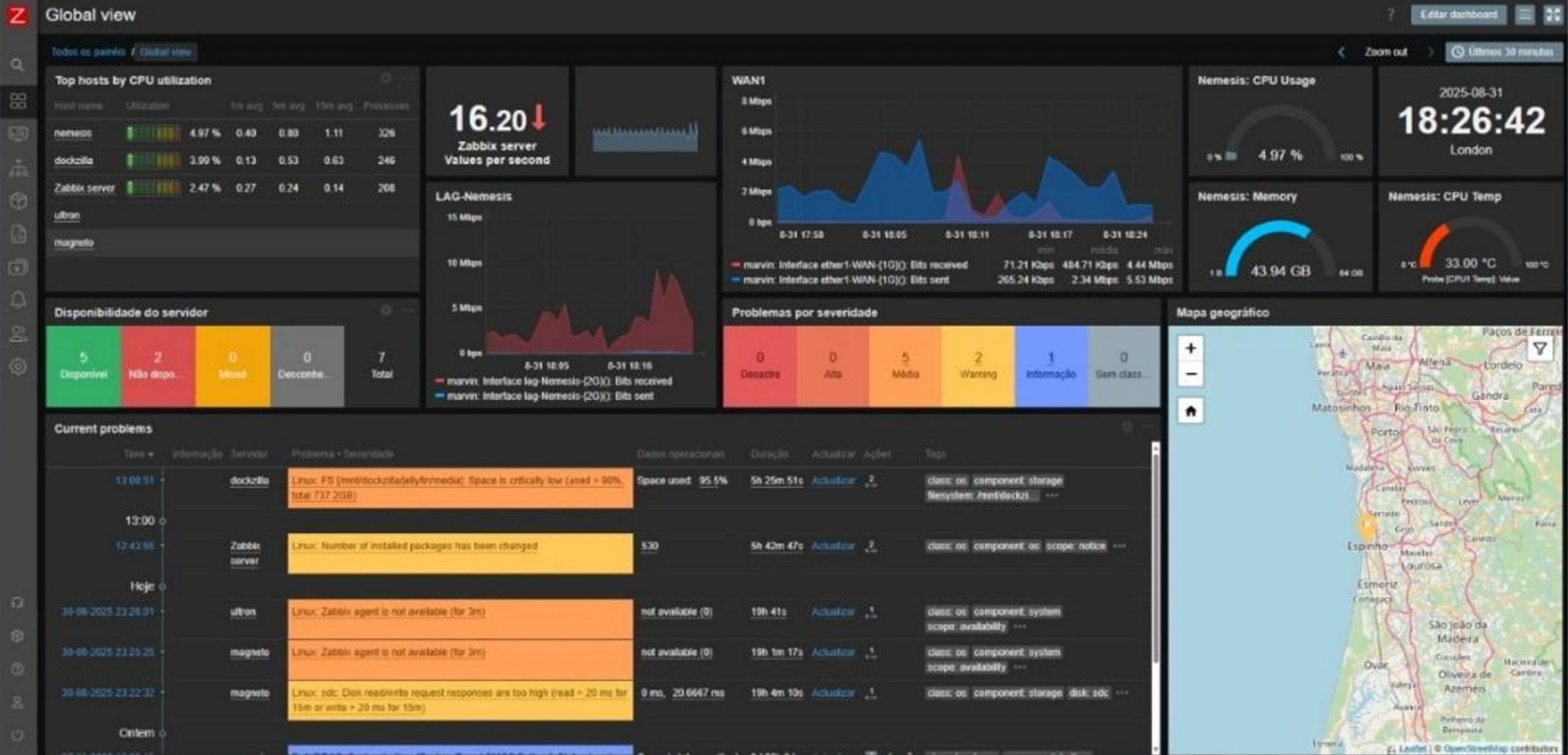Self-Hosting: benefits, risks and the role of Infrastructure
What is Self-Hosting
Self-Hosting is the practice of running IT services on one’s own infrastructure instead of relying exclusively on external providers. This may include anything from basic solutions such as email and file storage to critical systems like CRMs, e-commerce platforms, and collaboration environments.
Although the term has gained traction in recent years, the concept itself is not new. In the early days of commercial internet, most companies already operated their own servers in local data centers. The arrival of the public cloud changed this scenario, offering convenience and lower initial costs. However, the growing volume of data, legal requirements, and increasing recurring fees have led many organizations to reconsider regaining part of that control.
Talking about Self-Hosting today does not simply mean “going back to the past.” It is about applying modern technologies such as virtualization, containers, and automation to achieve intelligent independence, balancing public cloud and private infrastructure.
Evolution and current scenario
The history of Self-Hosting mirrors the cycles of IT. It started with dedicated servers, expensive and complex to maintain. Virtualization reduced costs and improved efficiency. More recently, the popularization of containers and orchestrators such as Docker and Kubernetes has made it possible to deploy sophisticated services in just minutes.
The result was a true democratization of infrastructure. Small and medium-sized businesses gained access to the same level of technology once reserved only for large corporations. At the same time, growing compliance requirements, such as GDPR, placed data sovereignty at the core of corporate strategy. This makes Self-Hosting today not only a technical option but also a response to legal and strategic concerns.
The hybrid scenario, meaning part of the services on public cloud and part on private servers, is the most common reality. And it is precisely in this balance that Self-Hosting shows its strength.
Services gaining traction in Self-Hosting
The Self-Hosted software ecosystem has grown impressively over the last decade. Nextcloud is one of the most emblematic examples: a complete platform for file storage and document collaboration, with features like Google Workspace and Microsoft SharePoint, but under full user control. For media streaming, Jellyfin and Plex provide experiences comparable to large commercial platforms, but without data collection or artificial catalog restrictions.
In development, GitLab and Gitea allow hosting code repositories, continuous integration pipelines, and team collaboration tools. In communications, projects such as Matrix, Rocket.Chat, and Mattermost emerge as solid alternatives to Slack and Microsoft Teams, free from external commercial policies.
More mature companies have extended this philosophy to critical areas. There are cases of ERPs, CRMs, and e-commerce systems running under Self-Hosted models to ensure advanced customization, integration with legacy systems, and greater cost predictability. The wide range of options allows each organization to choose which services make sense to bring in-house, without entirely giving up the public cloud.
Beyond these, demand for security and personal productivity solutions is also growing. Applications like Bitwarden or Vaultwarden allow secure password management without relying on external services. Wiki platforms like Wiki.js or BookStack provide a centralized space for technical documentation and internal knowledge. Monitoring tools like Zabbix, Prometheus, or Grafana helps track infrastructure status in real time, making operations more reliable.
Another expanding field is home and business automation. Home Assistant, for example, has become the preferred choice for integrating IoT devices into a controlled and private environment. Solutions like Pi-hole and AdGuard, which act as ad blockers and DNS filters, are widely used in businesses and homes to strengthen privacy and reduce security risks.
The common thread across all these services is clear: the ability to align technology with the user’s specific needs, without depending on external decisions. This flexibility is what makes Self-Hosting a growing movement for both individuals and organizations of different sizes.
Benefits for businesses and individuals
The first and most obvious benefit is data control. In a world where corporate and personal information has strategic value, relying on third parties to store everything represents a real risk. With Self-Hosting, organizations can define their own security, encryption, and auditing policies, preventing undue exposure and reducing the attack surface.
Another key factor is privacy. Large cloud providers often collect usage metadata, analyze behavior, and even adjust plans according to commercial interests. Hosting services independently ensures that only the organization or individual has access to the generated information. This is particularly relevant for organizations in regulated sectors such as healthcare, legal, and finance.
Autonomy is another crucial aspect. Companies relying solely on SaaS become vulnerable to price increases, policy changes, or even service shutdowns. Self-Hosting provides financial predictability and reduces dependency risks. It also enables customization: instead of adapting to what the tool offers, the organization shapes the service to its own needs.
For individuals, the gains are also clear. Running a personal media server, for example, eliminates catalog restrictions and ensures that content remains accessible regardless of contracts or licenses. In terms of productivity, maintaining a personal cloud with Nextcloud means having the experience of Google Drive or Microsoft OneDrive without subjecting data to tracking or external commercial policies.
Challenges and risks
Adopting Self-Hosting requires awareness of the responsibilities that come with the model. The first challenge is management. It is necessary to have a team or partner capable of constantly configuring, monitoring, and updating services. Ignoring security patches can be as risky as exposing credentials to public services.
Resilience is another point. A private infrastructure needs redundancy, backup policies, and recovery testing. If a server fails without a contingency plan, the impact may be direct on operations. Scalability must also be planned: the public cloud still has the advantage when rapid expansion is needed. For this reason, Self-Hosting often works best in hybrid models, complementing the cloud rather than fully replacing it.
Despite the risks, good practices can mitigate most problems and turn the strategy into a competitive advantage.
Recommended approaches
Successful implementation of Self-Hosting starts with planning. Servers, networks, and storage must be properly sized according to expected demand. Security should be a priority from the start, with network segmentation, strong authentication, and consistent use of encryption.
Automating tasks is another essential point. Tools such as Ansible, Terraform, and Docker Compose reduce errors and allow environments to be replicated easily. The same applies to monitoring and alerts, which should be integrated into daily operations.
But none of these precautions replace a good backup strategy. Regular backups, stored in different locations (ideally using the 3-2-1 rule: three copies, on two different media, one off-site), ensure that critical data is not lost in the event of hardware failure, a cyberattack, or human error. Testing restoration procedures is as important as creating backups; in other words, there’s no point in having backups if you don’t know how to recover the information in the event of a crisis.
Finally, governance and documentation are differentiators. A service is only sustainable if others can continue operating it. Investing in well-defined processes ensures infrastructure reliability not only in the present but also in the future.
How barpa can support
With its expertise in structured networks and telecommunications solutions, barpa is prepared to support companies that want to take this step. A Self-Hosting infrastructure is only reliable when the foundation—cabling, connectivity, and network topology—has been designed to handle high loads, redundancy, and security. This is precisely the field in which barpa excels.
Whether in corporate data center projects, hybrid environments, or internal network expansion, barpa helps organizations build the foundation necessary for Self-Hosting to be not just viable but strategic. Together with its clients, it transforms infrastructure into a competitive differentiator.
Self-Hosting reemerges as a powerful alternative for companies and individuals seeking greater autonomy, privacy, and security in a landscape increasingly dependent on external services. It is not about abandoning the cloud but about regaining control over what is truly critical.
For many organizations, this may be the key to reducing costs, increasing resilience, and meeting legal requirements more directly. The starting point lies in assessing which services are too strategic to depend on third parties. From there, building a solid infrastructure with trusted partners can turn Self-Hosting into a real competitive advantage.





Sorry, the comment form is closed at this time.